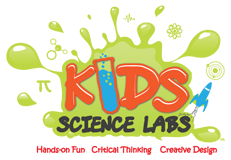Designing Roads is just one thing kids love in Seattle Summer Camps @ Kids Science Labs
A summer camp for our Seattle students should always start with a question to motivate and focus the learning environment. We know that roads need to be smooth, strong, durable, and maintained or else we are going to hear about it as civil engineers. Kids however want to know ‘Why are their so many potholes? In seattle. Roads also have to fit pipes, wires, and sewers underneath, however the constant temperature changes, as well as the use of chemicals to prevent icy roads, can cause havoc on our road ways! In a recent Seattle Summer Camp called Builder’s Paradise, our innovative students at Kids Science Labs investigated
How to make concrete with various pebble-like textures for added friction in Seattle Summer Camps
How potholes are created and how to use science to prevent environmental damage to roads
Which materials would be best for building roads, and then customizing our very own yellow brick roads
When changes in road designs are necessary based on geographic and climate variations that impact safety
Building Critical Thinking and Problem Solving is essential in any Seattle Summer Camp for Kids
Students engaged in problem solving on how to manufacture concrete and to keep each level of the earth flat, when pouring their own custom concrete aggregate. Each child at KSL explored the science in our city layers under the surface, including rocks, soil, clay, and minerals, as well as what happens when concrete (plaster) is poured with varying aggregate materials.
Show the video below to your child to learn more about roads or watch it with them to build more confidence in understanding how roads are built in Science in the City!






























